by Todd Hobin, Member of Local 78 (Syracuse, NY)
A musician should protect their hearing as if their career depended on it
NOTE: The pandemic has caused a pause in live performances, but performing is not the only risk to your hearing. Listen up.
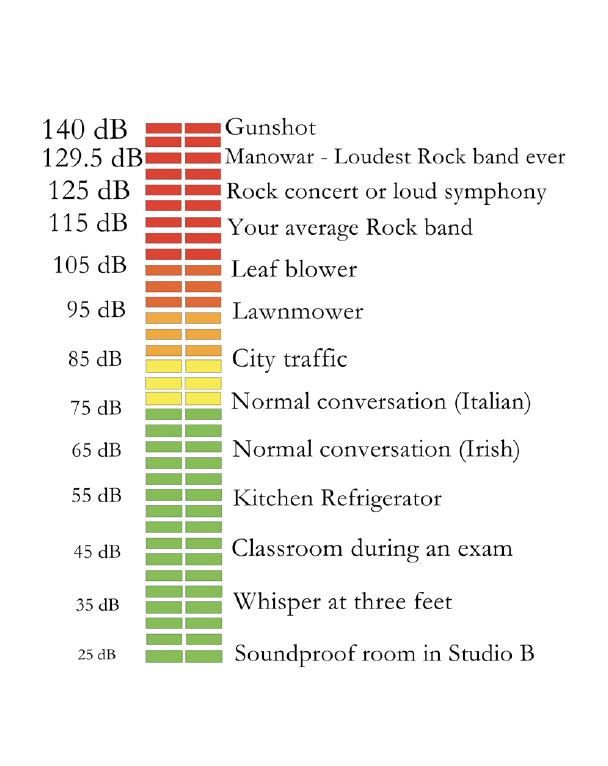
If you sit at the back of the orchestra, right in front of the percussion section, you’re a victim. Play in a rock band, you’re a victim. Drummers? Duh. But, what about the happy homeowner mowing their lawn, doing small repairs or housework? Do you ride a motorcycle, go to parties, or enjoy music in your earbuds? You are all victims. Prolonged sound over 90 decibels (dB) will cause permanent hearing damage. How long? As little as three minutes of mowing the lawn.
The tiny hair cells inside your cochlea are very sensitive. Too much volume will make them bend over and fold. Unlike some cells in your body, they will not regenerate. Long-term exposure will cause irreversible damage including tinnitus. (Musicians are 57% more likely to develop tinnitus.)
First, do no harm. Control your environment. Damaging sounds are everywhere. For example, full volume on your earbuds delivers 112 decibels. Don’t do that. Protect your hearing off the job.
May is Better Hearing Month, so what better time to think about the value of your ears? My completely unscientific field test starts in the field outside my house. I put these popular hearing protectors up against my tractor, my chainsaw, and the tools in my shop:
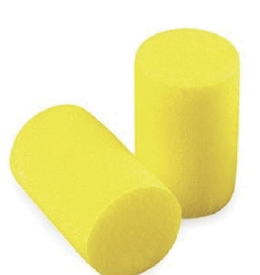
3M EAR Classic Earplugs. Proper insertion is essential to get their full 29dB Noise Reduction Rating (NRR). Roll them up between your thumb and forefinger into a tight little barrel. Then, using your opposite hand, reach over the top of your head and gently lift up on the top of your ear. This opens your ear canal to allow the earplug to slide in right up to the hilt. After insertion, press and hold the earplugs in your ears until they expand to fill the entire canal. This will take a little longer than you think. Be patient and make sure you have a good seal.
The most offensive sound I can think of is a circular saw cutting through a pine board. I cut through a number of boards without so much as a flinch. The EAR Classics were equally successful blocking out the sound of my chainsaw, my drill, and the massive sawmill my neighbor brought in to cut up and plank a 70-foot ash that fell in our yard. Perfect. Hair follicles saved.
The EAR Classics are reusable and you can wash them. A little soapy water does the trick. I don’t recommend them for gig use. They cut out too much sound. My rating: safe, comfortable, and inexpensive. Highly recommended.
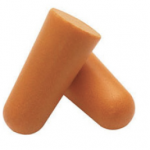
Uline Bullet Earplugs work well, but I noticed a couple of issues. They come in a variety of colors and Noise Reductions Ratings. I used the orange 33 NRR version for my test. Many manufacturers have similar products. They are a little firmer than the Classics. Insertion technique is critical, with the pointier end going in. The longer shaft goes in deeper and in my case caused a little ear pain from time to time. After a number of days testing, I noticed what sounded like water in my ear. My audiologist pulled a nasty chunk of hardened wax out of my ear. Could that have been caused by packing bullets in my ear canal?
Be careful. I don’t recommend washing them either. The foam doesn’t hold up. Rating: safe, a little uncomfortable at times, cheap. I purchased the 200-count box. I’ll use them up.
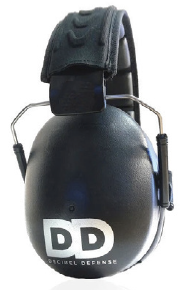
Professional Safety Ear Muffs by Decibel Defense have an impressive 37dB NRR. Riding the tractor was quiet and comfortable from the start. But on a hot day I had a problem. It got sweaty. I found myself adjusting them quite a bit. I also couldn’t wear a wide brimmed hat. I’m Irish. I burn. I rate them safe when in position, semi-comfortable, and very dorky. www.decibeldefense.com.
For the gig, I chose three consumer devices to rate:

Earasers—The clear plastic design is unique, making them all but invisible on the gig. With a -19 dB rating, they still allow enough sound in to be of use while saving you from the big hits and overall booming sound of a rock band in full swing. My field work over the last few years involved major concert venues, small clubs, and lots of band practices. After long gigs in hot environs, I was having trouble getting them out of my ears—eventually breaking off the little wire extraction thingy. No complaints though. They served me well. Rating: safe, comfortable, not so cheap.
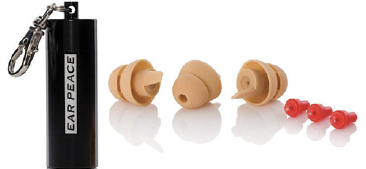
EarPeace HD Musicians Earplugs—I carry them with me everywhere I go. It’s been a constant field test in every environment from a huge amphitheater to a tiny stage in the corner of Shifty’s bar. I could hear everything clearly. It was just quieter. Sometimes I forget that I have them in. Even band practice is perfect. Hear what you need to, nothing more. Rating: Perfect. www.earpeace.com.
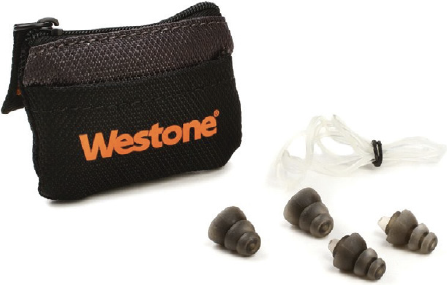
Westone makes hearing protection for shooters. They were recommended to me by a drummer. Go figure. And indeed, they have a very impressive array of products. www.westone.com. Rating: Trust the drummer.
The Best
A good musician needs a good audiologist. If you don’t have one already, get one now. You’ll want to get a baseline reading to know how much hearing you are losing over time. Find a professional audiologist near you who can make a mold of your ear canal to properly fit you with the best hearing protection for musicians. Find one at Hearingtracker.com. Rating: Pricey, but by far the best way to go.
Todd Hobin is a singer/songwriter, recording artist, studio owner, and adjunct professor in the Music Department at Le Moyne College. He has toured with the Beach Boys and the Kinks, to name a few, and has written scores for film and TV.


